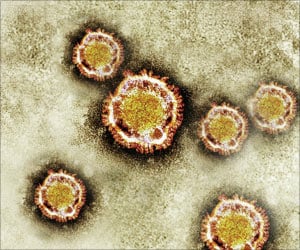An apparently increasingly used treatment method for a type of Achilles tendon disorder that includes injection of platelet-rich plasma does not appear effective.
An apparently increasingly used treatment method for a type of Achilles tendon disorder that includes injection of platelet-rich plasma into the tendon does not appear to result in greater improvement in pain or activity compared to placebo, according to results of a preliminary study published in the January 13 issue of JAMA.
"Overuse injury of the Achilles tendon is a frequent problem that often affects sport participants but also inactive middle-aged individuals. An estimated 30 percent to 50 percent of all sports-related injuries are tendon disorders," the authors write. Approximately 25 percent to 45 percent of patients eventually require surgery following ineffective conservative treatment. "There is a clear need for improved conservative therapy."Chronic Achilles tendinopathy is a degenerative condition characterized by pain, swelling and decreased activity. Platelet-rich plasma (PRP) injections is a treatment method recently introduced to improve tendon regeneration. Several recent reports indicated promising results with this treatment method, although these conclusions were based on laboratory studies and on clinical studies with important limitations, according to background information in the article.
Robert J. de Vos, M.D., of Erasmus University Medical Center, Rotterdam, the Netherlands, and colleagues conducted a study to compare the effects on pain and functional outcome of a PRP injection with a placebo injection for patients with chronic Achilles tendinopathy. The trial included 54 patients ages 18 to 70 years and was conducted between Aug. 2008 and Jan. 2009, with follow-up until July 16, 2009. Patients were randomized to eccentric exercises (usual care; exercises involved stretching the Achilles tendon while contracting the calf muscle) with either a PRP injection (PRP group) or saline injection (placebo group). A questionnaire (Victorian Institute of Sports Assessment-Achilles [VISA-A]), used to gauge pain and activity level, was completed at the beginning of the study and at 6, 12, and 24 weeks.
The researchers found that the average VISA-A score improved significantly after 24 weeks within the PRP group and within the placebo group. After adjustment for different variables, including the duration of symptoms, there was no significant difference in improvement on the VISA-A scores at the different follow-up times between these two treatment groups.
There was also no significant difference in secondary outcome measures, which included subjective patient satisfaction and the number of patients returning to their desired sport.
"Among patients with chronic midportion Achilles tendinopathy treated with an eccentric exercise program, a PRP injection compared with a saline injection did not result in greater improvement in pain and activity. Therefore, we do not recommend this treatment for chronic midportion Achilles tendinopathy," the authors write.
Advertisement
Source-Eurekalert
SRM













